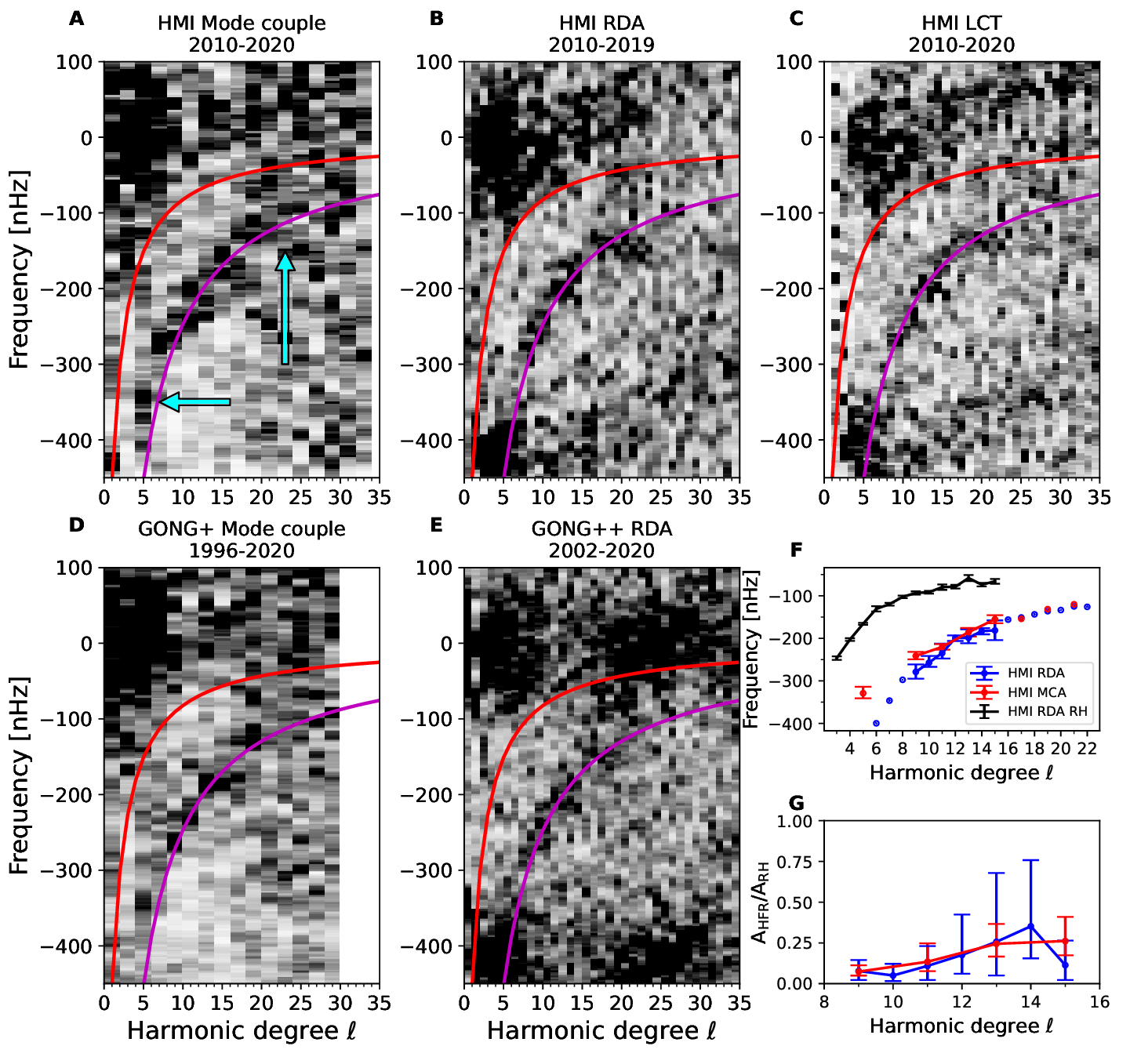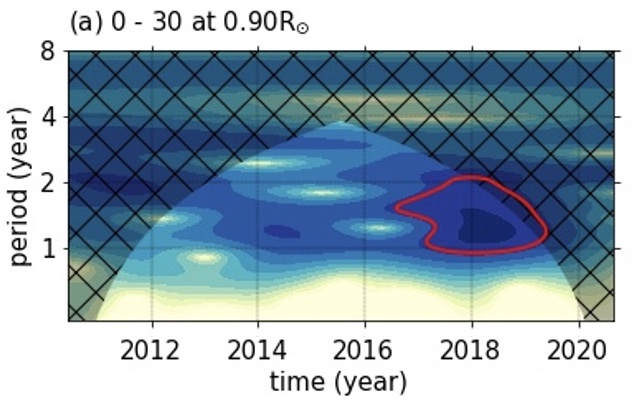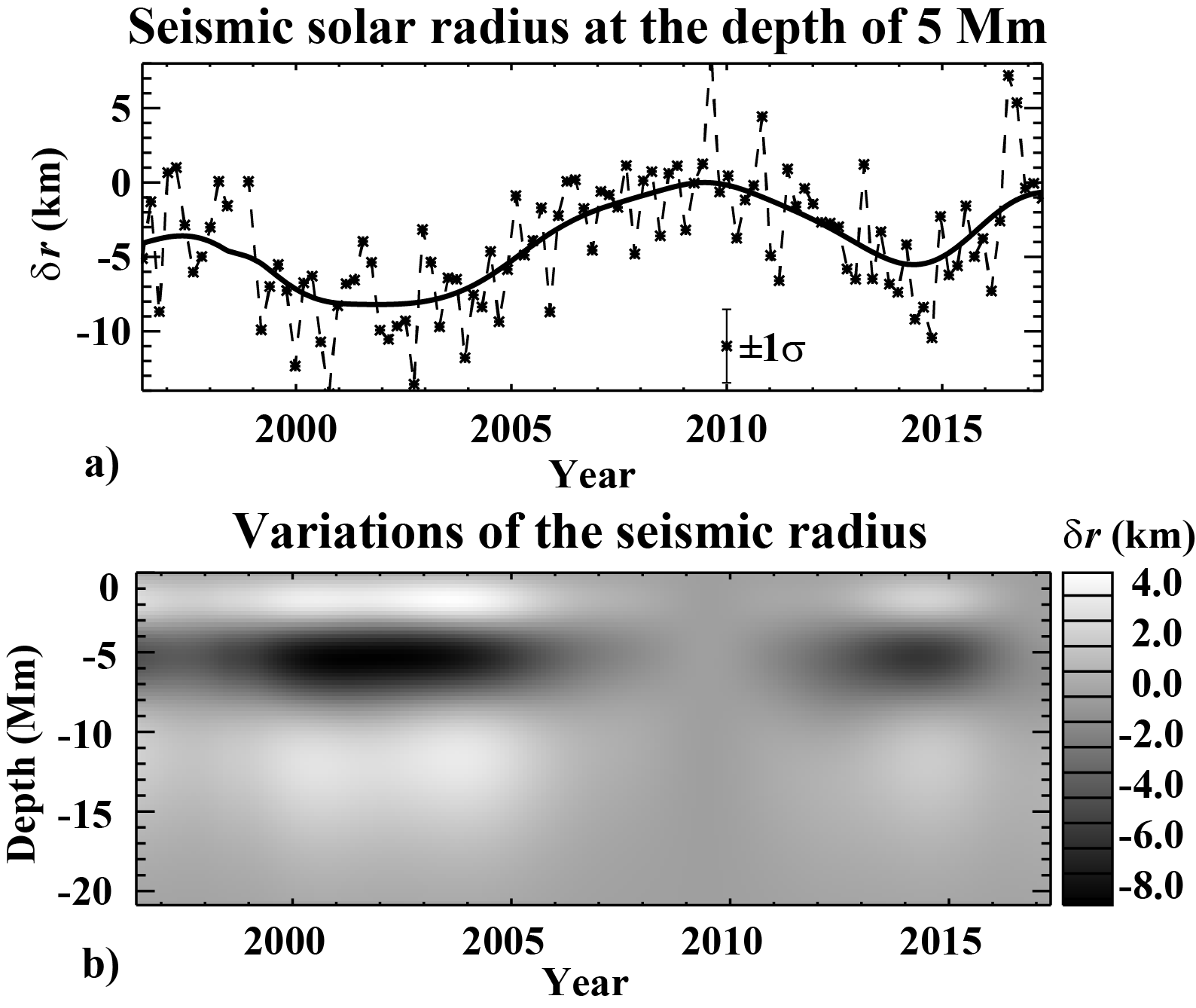Tag Archives: solar interior
169. The QBO-type signals in the Subsurface flow fields during solar cycles 23 and 24
153. Computing Helioseismic Sensitivity Kernels for the Sun’s Large-scale Internal Flows Using Global-scale Wave-propagation Simulations
A new method to derive the helioseismic sensitivity kernels for the Sun’s large-scale internal flows is developed. The new method is based on the idea of placing a small-volume flow perturbation inside the Sun’s model, simulating the wavefield in the photosphere, and then measuring the phase shifts caused by this internal perturbation.










